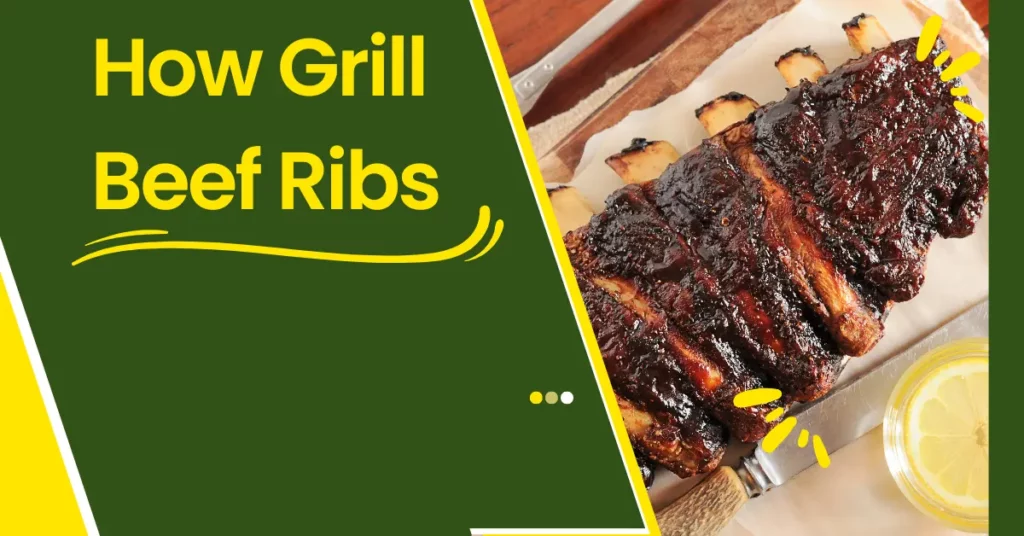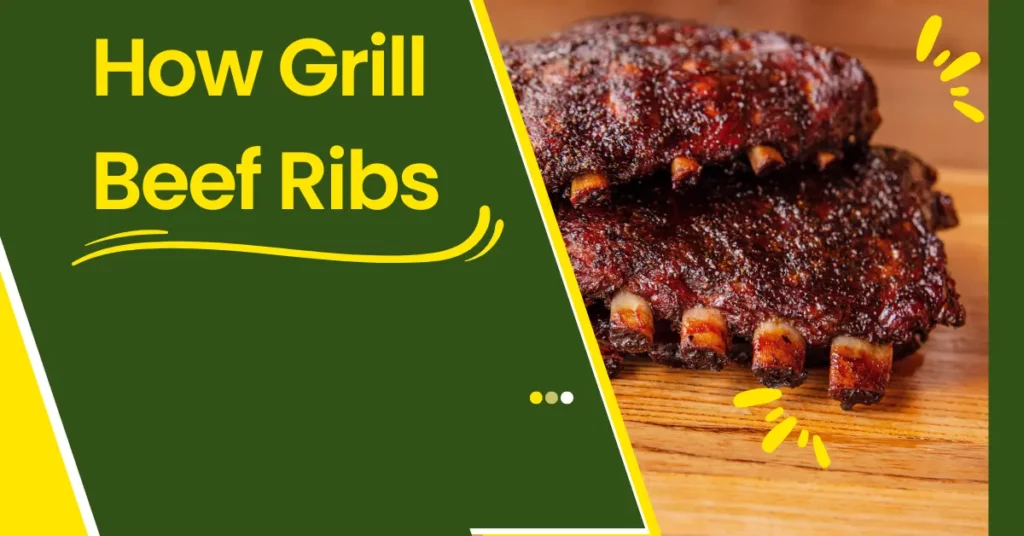This post may contain affiliate links. If you use these links to buy something we may earn a small commission. Thanks.
Grilling beef ribs is an art that transforms this tough cut of meat into a tender, flavorful delicacy. With the right techniques and a little patience, you can achieve mouthwatering results that impress family and friends. Whether you’re a seasoned griller or a beginner, this guide covers everything you need to know about grilling beef ribs to perfection.
Selecting the Right Ribs
The first step to grilling amazing beef ribs is choosing the right type. Beef ribs come in three main varieties:
- Short Ribs: Known for their rich, beefy flavor and high fat content. These are best for slow cooking methods and offer a luscious, tender result when grilled correctly.
- Back Ribs: Taken from the rib section near the backbone, these have more meat between the bones and are excellent for grilling due to their relatively uniform shape and size.
- Flanken-Cut Ribs: Thinly sliced across the bone, ideal for fast grilling, especially in Korean-style BBQ dishes. These cook quickly but still pack plenty of flavor.
When selecting ribs, look for:
- Marbling: Even distribution of fat throughout the meat, which helps enhance flavor and tenderness.
- Freshness: Bright red color and no unpleasant odors indicate fresh ribs.
- Size and Uniformity: Ribs of similar size cook more evenly, ensuring consistent results.
How to Cook Beef Ribs on the Stove
Choosing the right cut ensures you start with the best possible foundation for a delicious meal. If you’re unsure which cut is right for you, don’t hesitate to ask your butcher for recommendations.

Preparing the Ribs
Proper preparation is crucial to achieving tender and flavorful ribs. Skipping these steps can result in tough or flavorless meat.
Trimming: Remove any excess fat and silver skin from the ribs. The silver skin is a tough membrane that can prevent flavors from penetrating the meat and become chewy when cooked. Use a sharp knife and work carefully to avoid cutting into the meat.
Seasoning Options:
- Dry Rubs: Create a mixture of spices like paprika, garlic powder, onion powder, black pepper, brown sugar, and a pinch of cayenne. Apply the rub generously over the ribs, ensuring it covers every inch. Let the ribs sit for at least an hour or refrigerate overnight for maximum flavor infusion.
- Marinades: Combine ingredients such as soy sauce, olive oil, garlic, honey, and vinegar. Submerge the ribs in the marinade and refrigerate for 4-6 hours. Marinades not only enhance flavor but also add moisture to the meat.
- Combination Method: For a complex flavor profile, start with a dry rub and follow up with basting during grilling. This method layers flavors and creates a rich, caramelized crust.
Proper seasoning is the key to transforming beef ribs into a flavorful masterpiece. Don’t rush this step—it’s where the magic begins.
Preparing the Grill
The setup of your grill can make or break your ribs. Low and slow cooking is the secret to tender and juicy results.
Gas Grill:
- Preheat the grill to medium-high heat for searing.
- Create two zones—one for direct heat and one for indirect heat—by turning off burners on one side of the grill.
- Place a drip pan under the indirect heat zone to catch any fat drippings, preventing flare-ups.

Charcoal Grill:
- Light the coals and arrange them on one side of the grill for indirect cooking.
- Add chunks of hardwood like hickory, oak, or mesquite to the coals for a smoky flavor.
- Adjust the air vents to maintain a consistent temperature of 250-275°F.
Optional: Soak wood chips in water for 30 minutes and place them on the hot coals or in a smoker box. This step adds an extra layer of smoky flavor that enhances the overall taste of the ribs.
Grilling Process
The grilling process requires attention to detail and patience. Here’s how to master it:
Cooking Time and Temperature: Grill the ribs low and slow at a temperature of 225-250°F. This allows the connective tissues to break down, resulting in tender, juicy meat. Depending on the thickness of the ribs, cooking can take 3-5 hours.
Searing: Start by searing the ribs over direct heat for a few minutes on each side to lock in juices and create a flavorful crust.
Slow Cooking: Move the ribs to the indirect heat zone and close the lid. Monitor the temperature regularly and add coals or adjust burners as needed.
Turning and Basting:
- Turn the ribs every 30-45 minutes to ensure even cooking.
- Baste with a mop sauce made of apple cider vinegar, beef broth, and spices to keep the ribs moist and flavorful. Alternatively, use your favorite BBQ sauce for a caramelized finish.
Checking Doneness:
- Use a meat thermometer to check the internal temperature. Ribs are done when they reach 200-205°F.
- Look for visual cues: the meat will pull back from the bones, exposing about ¼ inch of bone, and the ribs should feel tender when probed with a toothpick.
Resting and Serving
Resting is a crucial step that allows the juices to redistribute within the meat, resulting in a juicier bite.
How to Rest:
- Remove the ribs from the grill and wrap them in aluminum foil.
- Let them rest for 10-15 minutes before slicing.
Slicing Tips:
- Use a sharp knife to slice between the bones for clean, even portions.
- Arrange the slices on a platter for an impressive presentation.
Serving Suggestions:
- Pair the ribs with classic BBQ sides such as coleslaw, baked beans, potato salad, or cornbread.
- Offer additional sauces on the side, such as a tangy BBQ sauce, spicy chimichurri, or a creamy horseradish sauce.
Presentation matters, so take the time to garnish your platter with fresh herbs or citrus slices for a professional touch.
Troubleshooting Tips
Even experienced grillers encounter challenges. Here are solutions to common issues:
- Dry Ribs: Maintain consistent heat and baste regularly to keep the meat moist.
- Uneven Cooking: Ensure ribs are placed evenly on the grill and rotate their position periodically.
- Burnt Exterior: Cook over indirect heat to prevent the exterior from burning while the meat cooks through.
- Lack of Flavor: Experiment with different wood chips, rubs, and marinades to enhance taste.
Conclusion
Grilling beef ribs is a rewarding culinary endeavor that delivers tender, flavorful results when done right. By carefully selecting your ribs, preparing them with attention to detail, and mastering the grilling process, you’ll create a dish that leaves a lasting impression. Don’t be afraid to experiment with new flavors and techniques to make your ribs uniquely yours. Fire up the grill, savor the process, and enjoy the fruits of your labor—your taste buds will thank you!
